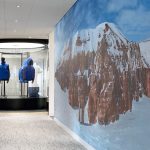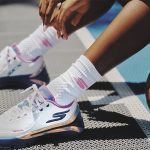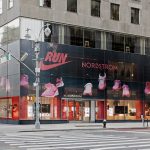In its first analyst meeting in three years, Nike announced plans to increase sales by 40% to $27 billion by 2015. In its full fiscal year ended May 31, 2009, its sales were $19.2 billion. Significant growth is expected to come from foreign markets, apparel, action sports, and retail for the Nike brand. Converse and Hurley are both expected to double sales.
“Weve never been more inspired, innovative and aligned to achieve our goals,” said Nike, Inc. President and CEO Mark Parker, in a statement.. “We have powerful competitive advantages in our portfolio -innovative and compelling products, brands that are distinct and relevant to their consumers, and the world’s greatest athletes and teams. Our focus is to build, fuel and accelerate the power of our portfolio.”
Overall, it kept its long-term growth forecast of annual sales increasing in the high single-digit percentage with profit per share rising in the middle teens. It expects a return on invested capital of 25% and to increase dividends within a target calendar year payout range of 25-35% of trailing four quarter earnings per share.
The company said the Nike brand accounts for approximately 85% of total revenue but Nike Inc.’s Other Brands continue to increase their contribution to the company’s overall growth strategy.
“With our acquisition of Umbro, NIKE has extended its position as the biggest football company in the world,” Parker said. “Hurley continues to outperform everyone in its market; Cole Haan has tremendous opportunity for growth; and Converse, nearly a $1 billion business, has developed strategies to double its revenue by 2015.”
NIKE Brand President Charlie Denson provided an overview of how NIKE’s consumer-focused category strategy is driving growth through increased market place capacity and penetration, “NIKE is the most connected, authentic and distinctive brand in the industry.” Denson continued, “Our consumer focused strategy enhances our ability to deliver great product and elevated consumer experiences which will help grow the NIKE Brand to approximately $23 billion by the end of fiscal 2015.”
Among categories:
- Action Sports – comprised of NIKE 6.0 and NIKE SB, is the fastest growing category within the Nike Brand. The company anticipates doubling its current estimated $390 million business by 2015.
- Athletic Training – started more than 20 years ago with the advent of NIKE cross training. This business, estimated at $1.4 billion, continues to redefine performance with key innovations like NIKE Pro base layer apparel and the Trainer1 shoe.
- Basketball – led by the strength of the Jordan Brand and excellent opportunities in the United States and China, NIKE’s basketball business is currently at approximately $1.7 billion in revenue.
- Football – with NIKE Brand Football revenue of approximately $1.7 billion, the company is launching its largest-ever presence at a World Cup including new footwear, national team kits, and NIKE Football+.
- Running – with approximately $2.1 billion in revenue, NIKE”s original category continues to be the source for key innovations including Flywire, Lunar Cushioning, and Nike+ enabled footwear. Nikeplus.com is the world’s largest running club with close to 3 million registered members and Lunar Glide continues to expand the category’s growth opportunities.
- Sportswear – the company’s largest category at about $4.9 billion continues leveraging new performance ideas from the six sports categories as well as franchise products like the Air Force 1 (which sells 15 million pairs a year 25 years after its debut).
- Women’s Training – with nearly $740 million in sales and the number one position in women”s training footwear in the U.S. and the top five European markets, a new generation of NIKE Free footwear – designed to strengthen the body and improve fitness by activating the core – in concert with the company’s strongest ever apparel offering continues to drive growth in this category.
Nike officials particularly highlighted growth potential in the apparel opportunity. Officials said Nike has a single-digit share of the market in the highly fragmented U.S. apparel market and is also a small player overseas. It has centralized its apparel team around the world and is reducing the number of styles, vendors and materials it uses to focus on top-selling items such as T-shirts, track jackets and its Pro line of performance gear.
Eric Sprunk, Nike’s vice president of product and merchandising, said Nike plans to quadruple the investment it makes in apparel innovation and trends each year over the next five years. “Apparel is the single biggest opportunity that we have as a company,” Sprunk said.
In discussing geographic opportunities, the company announced plans to grow the NIKE Brand in all six of its geographies including driving mid single-digit growth through broader expansion in its developed geographies (North America, Western Europe, and Japan), targeting an additional $3.0-3.5 billion of annual revenue by the end of fiscal 2015.
Additionally, NIKE plans to invest aggressively in its developing market geographies (Greater China, Central & Eastern Europe, and Emerging Markets) targeting low double-digit growth and an additional $3.0-3.5 billion of annual revenue by the end of fiscal 2015. A heavier emphasis is particularly being placed in markets such as India and Brazil, where the middle class is growing quickly.
In discussing its Direct to Consumer business, the company outlined plans to open approximately 250-300 new NIKE-branded stores worldwide over the next five years to elevate the consumer experience and position the brand in the world’s premium shopping locations. Plans call for growing its store count to 738 from 457 currently. It also plans to drive accelerated growth in digital commerce, leveraging the explosive growth of NIKEiD. It plans to expand its digital customer base to 180 million from 130 million. Given these efforts, NIKE, Inc. expects mid-teens growth in its Direct to Consumer Business which should
contribute an additional $2.2-2.6 billion by 2015.
The company sees three distinct retail formats. “Brand Experience” stores, ranging from 12,000-20,000 square feet and in “A” locations in key markets, will feature upwards of eight categories of product and allow for consumer customization. “Category Experience” stores will range from 3,000 to 6,000 square feet and focus on the Nike brand. In this format, a running store has already opened in the Stanford (CA) Shopping Center and a soccer shop will spring up in Manchester, England this year. The third format, “Best of Nike Experience,” will focus primarily on international markets in conjunction with local retailers.
Also highlighted was an increased focus on working with retail partners to create more elevated and differentiated consumer experiences including execution of category-segmented concepts within key markets. NIKE’s wholesale business model is expected to continue to be the primary driver of long-term growth, with retail partners still expected to account for more than 80% of the company’s overall business by 2015. To build and strengthen its global retail presence, NIKE, Inc. announced plans to invest $500-600 million in capital over the next five years to develop the Direct to Consumer business and build capabilities to support both owned and wholesale retail productivity and performance.
In discussion of its Other Businesses, which includes Cole Haan, Converse Inc., Hurley International LLC, NIKE Golf, and Umbro Ltd., the company announced a low double-digit growth target which should contribute an additional $1.5-2.0 billion of revenue by the end of fiscal 2015.
Converse is expected to double in size over the next two years. Converse will also open its first full-priced Converse store in Boston this summer.
“Think of Converse as an inspired-by-basketball brand. It drifts into other areas — into music, into rock and roll … where Nike wouldnt go,” said Eunan McLaughlin, president of Nike’s affiliates unit.
Nike also plans to assume ownership of Converse, which reached a billion in sales in its last fiscal year, in China within a year. Currently, it only owns licensing rights in China. The company will also look to take back ownership of the brand in other regions, including the United Kingdom. That brand is only owned and managed by Nike in the United States and Canada.
“As we start to take greater control of those markets, in China and the UK, for example, there will be an immediate impact not only on revenue but on our earnings,” he said.
Officials said similar opportunities exist for brands such as Umbro and Hurley, he said. Hurley, currently a $200 million business, will more than double to over $500 million by 2015, he said.
Nike plans to generate total cash flow from operations of $12 billion by 2015. The company said it will use $5 billion of that to repurchase shares. Parker also said Nike would consider buying other businesses if Nike could add value to them.














